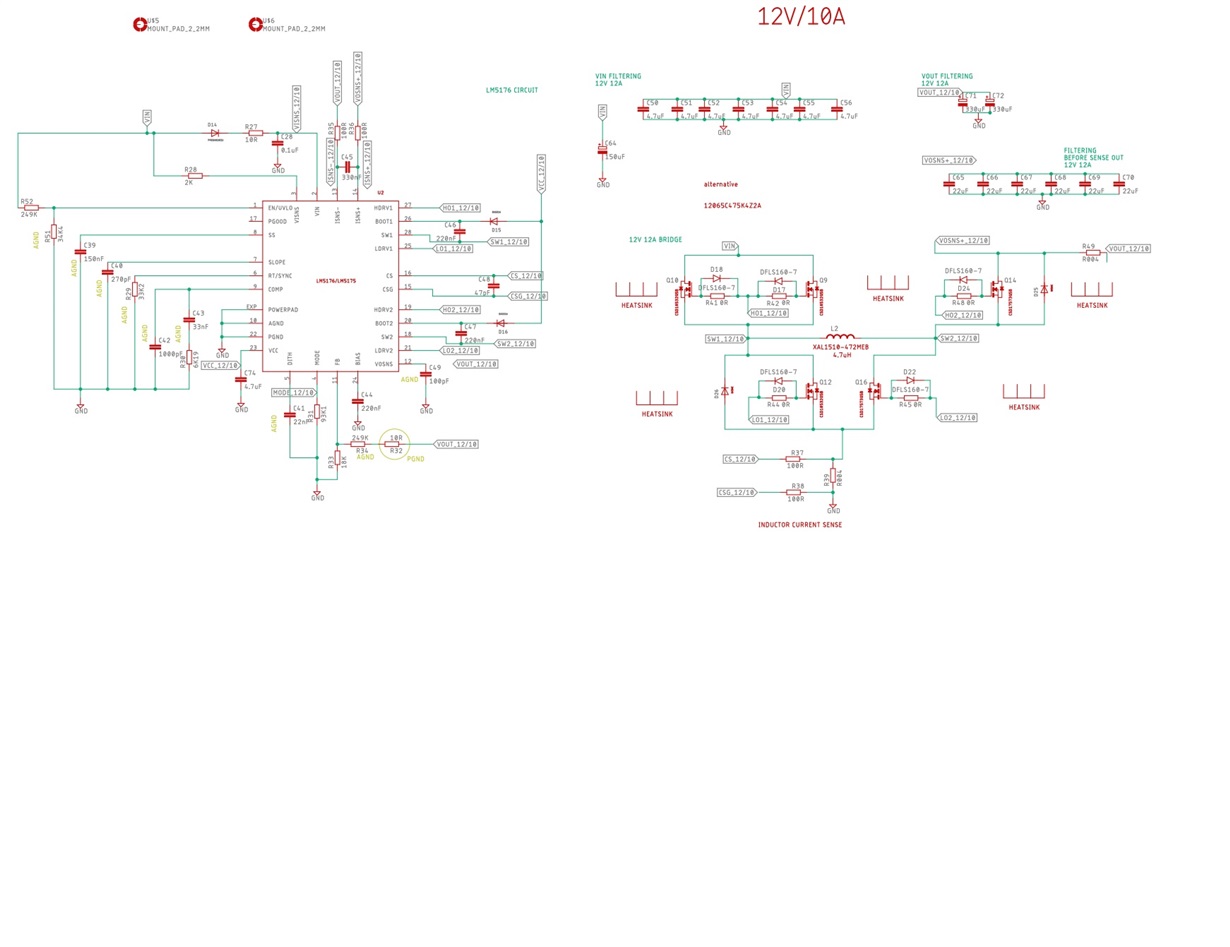Other Parts Discussed in Thread: LM5176
Hello there.
We have built a buck-boost converter with LM5176 based on the evaluation board designs, with 12V and 12A output from 10V-24V inputrange. The circuit worked as expected with low ripple and good transient response.
The problem is when we powered it up with low current limit (around 20mA), from the bench power supply, while the inrush current for starting was about 200mA leading to a hiccup behavior of the bench power supply. The result is that the circuit is somehow damaged and we can figure out how. Although the output voltage is correct and all the gate signals are acting correctly, there is a significant higher consumption than before with no load. With 24V input it shows around 135mA consumption.
We have already changed the controller IC, input capacitors, upper and lower MOSFETs and inductor but nothing seems to correct the problem. Measurements in boost capacitors do not show anything abnormal and diodes are measured correctly.
We haven't tested yet the circuit with load, after the fault occurred.
Any help on what to suspect for the excessive power consumption would be helpful.
Thank you in advance.


